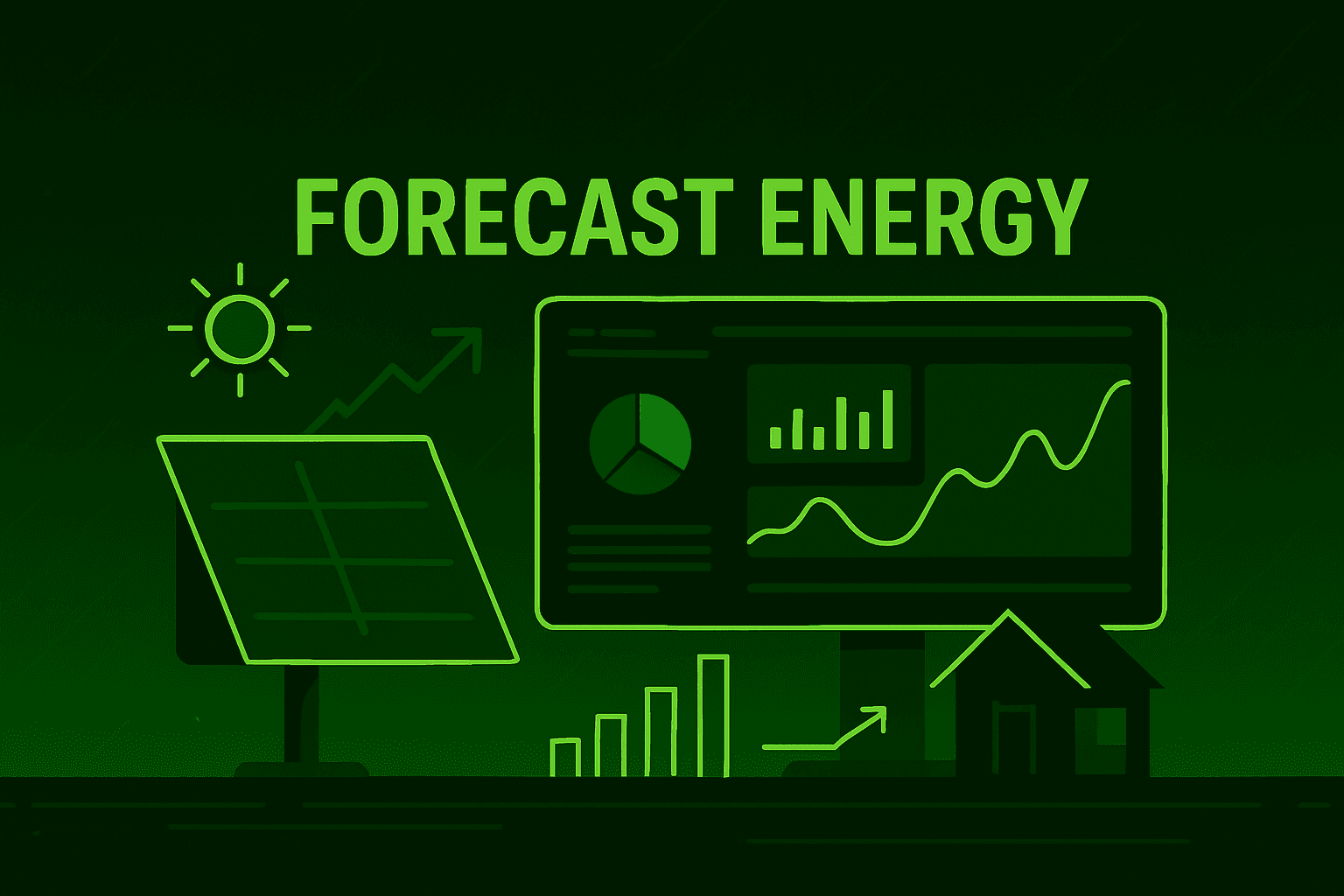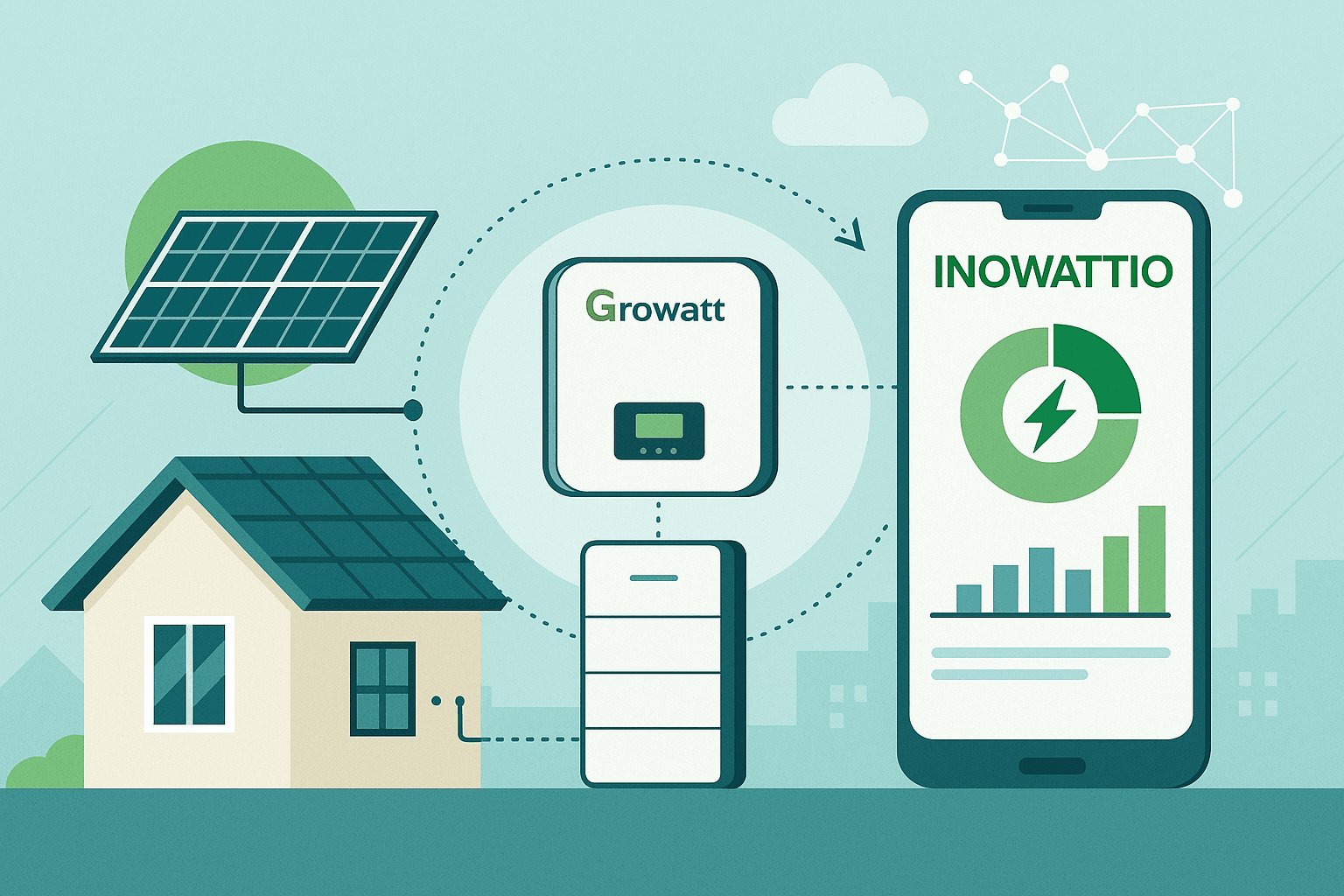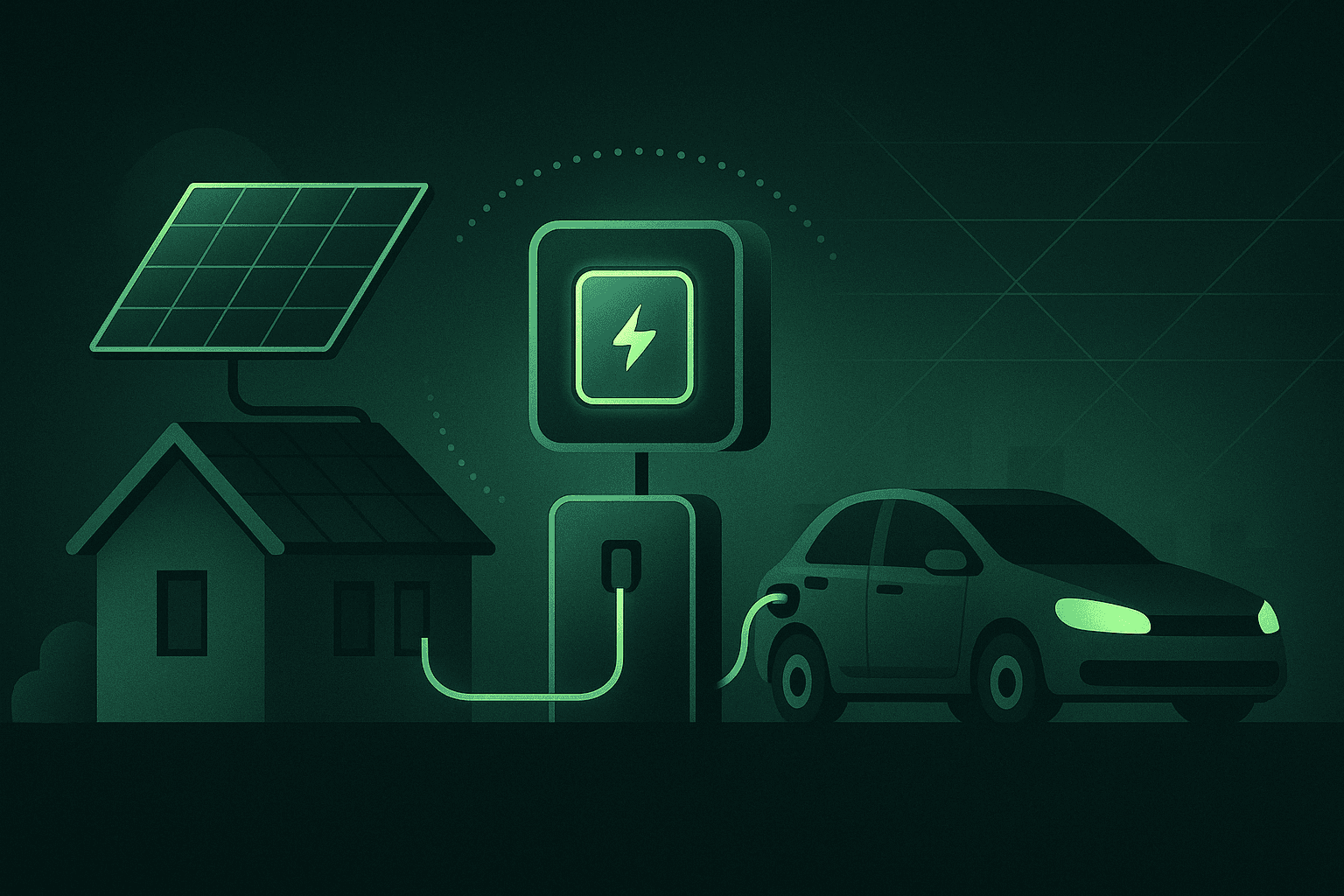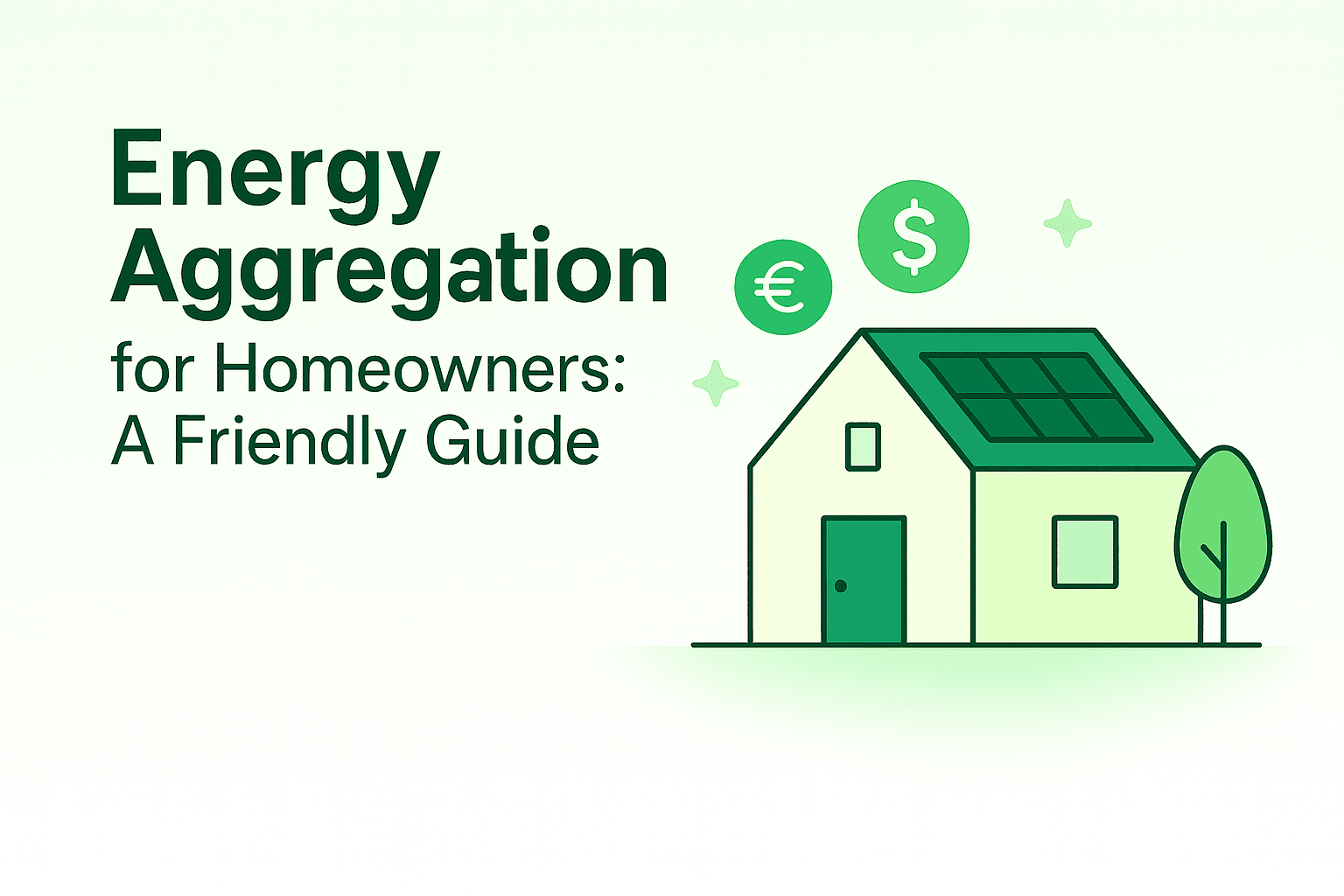Forecast. Optimize. Save - Smart Energy Forecasting Powered by Inowattio

Forecasting solar production and energy use is essential for improving efficiency and gaining more control over your home’s energy. By understanding the weather, your habits, and how your system behaves, smart tools can help you plan ahead, save money, and use energy more wisely.
Energy Forecasting Explained — How Inowattio Uses Predictive Intelligence to Optimize Distributed Solar, Batteries and Home Energy Flows
The role of forecasting in distributed energy systems
Energy forecasting is rapidly becoming a core component of modern distributed energy systems. As residential solar, behind-the-meter batteries, EV chargers and smart loads continue to grow, forecasting has shifted from unimportant “extra” to an operational necessity. For prosumers and energy communities, forecasting enables a more stable, predictable and efficient use of local generation. For aggregators, forecasting is the foundation that allows flexible resources to participate in energy and flexibility markets. For grid operators, accurate forecasting is essential to planning local load, voltage behaviour and balancing.
Inowattio integrates forecasting as a central intelligence layer, using weather models, consumption analytics, device telemetry and statistical patterns to generate hour-by-hour predictions of both production and load. Unlike simple static estimators, the platform continuously adapts its models as real-time conditions evolve. The result is a responsive forecasting engine that supports automation, optimization, flexibility services and more efficient operation of distributed energy resources (DERs).
At a high level, the objective of forecasting is straightforward: predict the future state of the home energy system with enough accuracy to make optimized decisions. Inowattio focuses on three main prediction layers:
- PV generation forecasting – how much energy the solar system will produce;
- load forecasting – how much electricity the site will demand;
- net energy forecasting – expected surplus or deficit based on generation minus demand.
Without forecasting, DER optimization is largely reactive: the battery charges “after the fact”, loads operate in fixed schedules și solar surplus poate fi irosit. With forecasting, the system becomes proactive: assets are charged or discharged based on predicted conditions, loads are shifted intelligently, iar evenimentele de flexibilitate pot fi susținute cu o fiabilitate mai mare.
PV production forecasting in Inowattio
PV forecasting is the process of estimating how much energy a solar installation will generate in the next hours or days. While solar physics is well understood, real-world PV output depends on multiple dynamic variables. Inowattio combines several categories of data into its forecasting models.
Meteorological inputs
Forecast accuracy depends heavily on weather. Inowattio uses meteorological data such as:
- global horizontal irradiance (GHI),
- direct normal irradiance (DNI) and diffuse components,
- cloud cover evolution and cloud types,
- temperature forecasts, humidity and precipitation signals.
Short-term cloud movement and temperature changes are particularly relevant because they cause rapid fluctuations in PV output. Temperature influences module efficiency, while cloud dynamics impact effective irradiance on the array.
System-specific parameters
Each PV installation behaves differently. Inowattio models each site individually using system-specific parameters, such as:
- orientation and tilt of arrays,
- nominal DC capacity and inverter AC limits,
- observed shading patterns over time,
- site-specific efficiency curves derived from telemetry,
- historical production under similar irradiance and temperature conditions.
This combination allows Inowattio to generate personalized forecasts for each system, rather than generic irradiance-based estimations.
Real-time adjustments and feedback
Static forecasts degrade quickly in real conditions. Inowattio continuously recalibrates its predictions using:
- live telemetry from inverters and smart meters,
- short-term deviations between forecasted and measured power,
- rapid weather pattern shifts that impact irradiance.
This closed feedback loop significantly increases accuracy, especially for intra-day forecasts (next 1–6 hours), which are critical for automation and flexibility activation. The end result is an hourly PV forecast curve that highlights generation peaks, troughs and expected daily yield, forming the foundation for scheduling, battery optimization and surplus management.
Load forecasting: predicting household electricity demand
Load forecasting is in many ways more complex than PV forecasting. Human behaviour, appliance usage, seasonal routines and climate all influence consumption patterns. The objective is to estimate how much energy a home will draw from its circuits in the upcoming hours and how this demand will evolve during the day.
Historical consumption patterns
Electricity use tends to be highly repetitive. Inowattio detects:
- morning peaks associated with coffee, cooking and hot water;
- midday lows when the dwelling is often unoccupied;
- evening peaks from cooking, lighting, entertainment and heating;
- nighttime baseload from fridges, routers and standby devices.
These recurring patterns form the baseline for load forecasting at the site level.
Weekday–weekend and seasonal effects
Residential load changes substantially between weekdays and weekends. Machine-learning models detect these shifts and maintain separate behavioural profiles where needed. Seasonal effects are also integrated using indicators such as heating degree hours (HDH) and cooling degree hours (CDH), which help predict when HVAC systems, heat pumps or boilers will significantly increase consumption.
Routines, anomalies and context
Using rolling analysis windows, Inowattio’s algorithms identify:
- emergence of new appliances or high-load devices,
- changing occupancy patterns (e.g., work-from-home vs office),
- holiday periods or extended absences,
- recurring EV charging sessions,
- one-off anomalies separate from true behavioural changes.
By learning these patterns, the platform maintains load forecasts that remain robust even when household behaviour gradually evolves.
Weather-adjusted and context-aware demand
Load is highly sensitive to weather and context. Cloudy cold days increase heating or hot water demand, while hot sunny days drive cooling and ventilation loads. Storm conditions may reduce outdoor activity and increase indoor appliance usage. Inowattio integrates this context into its load models to minimize variance and improve the reliability of the demand forecast curve.
The output is an hourly load forecast that shows expected demand peaks and valleys. When combined with PV forecasting, this enables a precise view of the site’s net energy profile.
Net energy forecasting: the actionable layer
While PV and load forecasts are useful individually, the most actionable information is the net energy forecast. This combines generation and demand into a single curve that expresses:
- expected surplus – when PV generation exceeds load;
- expected deficit – when load exceeds PV generation.
This net forecast is the key driver for operational decisions:
- battery charge/discharge scheduling and setpoint optimization,
- EV smart charging and managed charging profiles,
- load shifting recommendations for flexible devices,
- export optimization and curtailment avoidance,
- participation in demand response and flexibility programs.
With accurate net-energy visibility, Inowattio can plan energy flows ahead of time rather than reacting instant by instant. This is vital for delivering firm commitments into markets and for guaranteeing performance in contracted flexibility events.
From prediction to automation in Inowattio
Forecasting becomes valuable when it directly influences control and optimization strategies. Inowattio converts predictions into concrete actions through several layers of automation and configuration.
Battery optimization
Using PV, load and net-energy forecasts, the platform determines:
- when the battery should charge, prioritizing PV surplus or low-tariff periods,
- when the battery should discharge to cover predicted evening peaks,
- when the battery should remain idle to preserve cycle life and avoid unnecessary throughput.
This approach maximizes self-consumption, reduces grid imports during expensive tariff windows and extends battery lifetime by avoiding inefficient cycling.
EV smart charging
Technical users can integrate EV charging logic that considers:
- predicted PV surplus windows,
- load peaks and local circuit constraints,
- time-of-use or dynamic tariffs,
- flexibility events required by aggregators or DSOs,
- user constraints such as minimum state of charge by a given time.
This prevents EV charging sessions from creating new demand peaks or overloading circuits and aligns charging with both cost and carbon efficiency objectives.
Load shifting and controllable devices
Appliances such as washing machines, dryers, heat pumps, boilers or pool pumps can be scheduled automatically or semi-automatically based on energy availability forecasts. Inowattio can provide recommendations (“run this device during the next PV peak”) or trigger automations where devices are integrated and user policies permit it.
Flexibility and market participation
For aggregators operating portfolios of residential assets, forecasting is mandatory. Inowattio’s forecasting engine allows aggregators to:
- estimate available upward and downward flexibility capacity,
- commit to day-ahead or intraday market positions,
- design demand response events with realistic targets,
- reduce non-delivery risk during contracted flexibility windows.
Accuracy in forecasting directly impacts the revenue potential from flexibility markets and the reliability of services delivered to system operators.
Technical scenarios that highlight the value of forecasting
Scenario 1: High-PV day with expected surplus
The PV forecast indicates a strong midday peak, while the load forecast shows low occupancy and low consumption between 11:00 and 15:00. The net-energy forecast predicts a significant surplus.
In this case, Inowattio can:
- charge the battery to a higher state of charge during the surplus window,
- shift EV charging into those hours,
- preheat water via a heat pump boiler,
- schedule flexible appliances such as washers and dryers.
Evening consumption is then supplied from stored solar energy, increasing self-consumption and reducing peak-tariff grid imports.
Scenario 2: Low-generation day with high evening demand
Cloud cover and low irradiance are forecasted, while the load forecast indicates a high evening consumption window driven by heating and occupancy.
In response, Inowattio can:
- pre-charge the battery during cheaper night-tariff periods,
- delay discretionary loads where possible,
- reserve battery capacity specifically for the predicted evening peak.
This strategy reduces exposure to high-tariff evening prices and stabilizes the site’s demand profile from the grid perspective.
Scenario 3: Flexibility event for an aggregated portfolio
An aggregator using Inowattio receives a request to provide downward flexibility (load reduction or net-export increase) in a specific one-hour window. Forecasts across the portfolio show which homes will have surplus PV, which have charged batteries, and which can reduce flexible loads.
Based on this, the platform can:
- increase battery discharge setpoints for selected homes,
- temporarily reduce or pause flexible loads,
- coordinate EV charging deferral.
The event is delivered with higher reliability because actions are grounded in forecasted capacity rather than static rules.
Scenario 4: Community-level optimization
In an energy community or flexibility cluster, aggregated PV and load forecasts are used to identify collective surplus and deficit periods. Community batteries and peer-to-peer sharing mechanisms can then be orchestrated around these forecasts.
This enables:
- higher local self-consumption of renewable energy,
- reduced reverse power flows and congestion,
- better alignment with local network constraints.
Why forecasting is foundational for future energy systems
As distributed renewable energy continues to scale, forecasting becomes a foundational capability, not an optional feature. Grid operators require predictability, aggregators require accuracy to commit resources, prosumers require visibility to optimize their investments, and energy communities require coordination mechanisms. Market participation and flexibility services both depend on reliable predictive models.
Without forecasting, distributed energy systems remain reactive and inefficient. With forecasting, they become predictable, controllable and capable of autonomous optimization. Inowattio’s forecasting engine is designed to support exactly this transition, combining real-time telemetry, machine learning, localized weather models and user behaviour analytics to enable smarter, more resilient and more efficient distributed energy systems.
For technical users, forecasting is not just an analytical tool — it is the control signal that unlocks the full potential of DERs, from battery optimization and EV smart charging to flexibility markets and community-level orchestration.

Growatt & INOWATTIO: the perfect solution for smart prosumers
Growatt systems work seamlessly with the INOWATTIO platform, giving prosumers full control over their solar energy. Monitor, store, and optimize power in real time with a smart app that helps you save money and support a greener, more sustainable energy network.

EV Chargers - Quick-start guide
Charge smarter, not harder. Learn the essentials of EV chargers in Romania: AC vs. DC, the right power (7.4/11/22 kW), solar & battery integration, and pro installation for safety and uptime. Plug into lower costs and a cleaner drive with Inowattio.

A Simple Guide to Understanding Energy Aggregation
A friendly guide to energy aggregation: how Inowattio pools home solar and batteries so you can lower bills, earn credits, and use energy smarter.

Inowattio now integrates with Huawei inverters — from homes to utility-scale
Inowattio now integrates end-to-end with Huawei. Users get unified monitoring, sub-second setpoint control for P/Q and export limits, coordinated battery dispatch, and grid-services readiness—scalable from single-phase rooftops to large three-phase and utility plants.